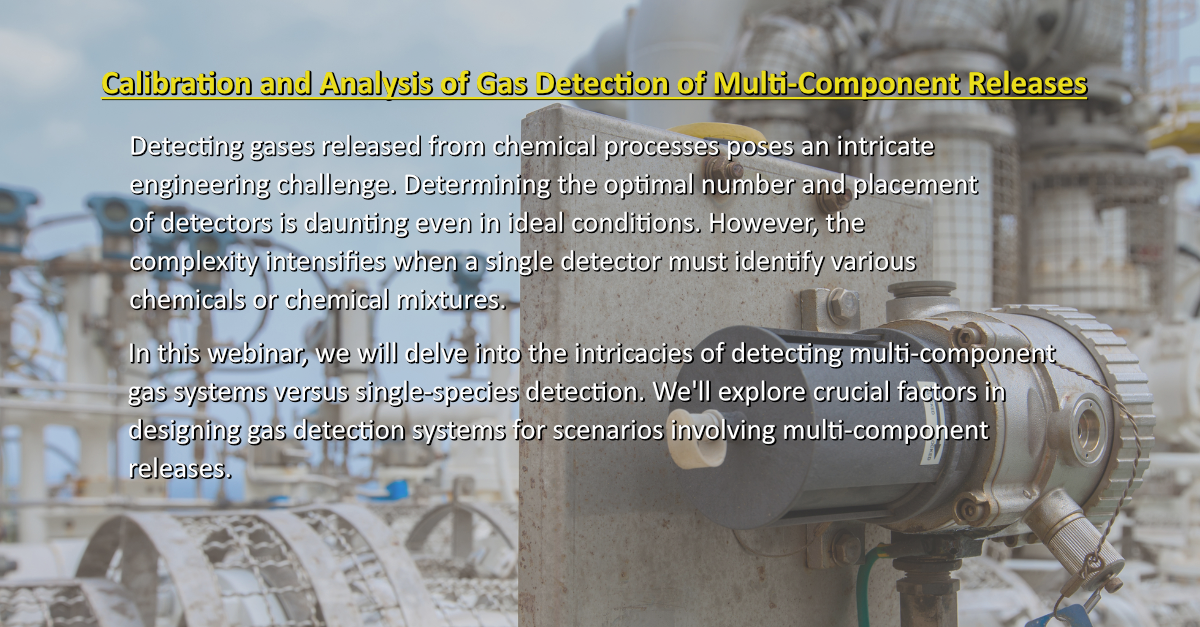Register for this webinar on Wednesday 28Feb2024 10:00am EST (UTC -5.00) at the bottom of the page.
Detecting gases released from chemical processes poses an intricate engineering challenge. Determining the optimal number and placement of detectors is daunting even in ideal conditions. However, the complexity intensifies when a single detector must identify various chemicals or chemical mixtures. Gas detectors are typically calibrated to recognize specific chemicals, meaning exposure to different substances yields disparate measurements. For example, a detector calibrated to trigger an alarm at 10,000 PPM of methane will respond differently to the same concentration of ethylene. This discrepancy arises because detectors are accurate only when measuring the calibrated gas, highlighting a fundamental limitation. Moreover, this issue spans across various gas detection technologies.
In this webinar, we will delve into the intricacies of detecting multicomponent gas systems versus single-species detection. We’ll explore crucial factors in designing gas detection systems for scenarios involving multicomponent releases. These factors include selecting the optimal gas for detector calibration, identifying the species and concentrations for gas dispersion calculations and mapping, and addressing scenarios where various detectors are needed to detect different gas species.

